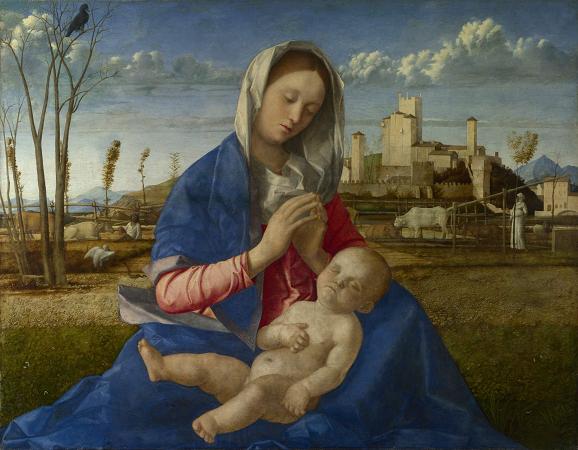Venetian School Artist. Venetian painting was a major force in Italian Renaissance painting and beyond. Beginning with the work of Giovanni Bellini and his brother Gentile Bellini and their workshops, the major artists of the Venetian school included Giorgione, Titian, Tintoretto, Paolo Veronese and Jacopo Bassano and his sons. Considered to give primacy of colour over line, the tradition of the Venetian school contrasted with the Mannerism prevalent in the rest of Italy. The Venetian style exerted great influence upon the subsequent development of Western painting. By chance, the main phases of Venetian painting fit rather neatly into the centuries. The glories of the 16th century were followed by a great fall-off in the 17th, but an unexpected revival in the 18th, when Venetian painters enjoyed great success around Europe, as Baroque painting turned to Rococo. This had ended completely by the extinction of the Republic of Venice in 1797 and since then, though much painted by others, Venice has not had a continuing style or tradition of its own. Though a long decline in the political and economic power of the Republic began before 1500, Venice at that date remained the richest, most powerful, and most populous Italian city and controlled significant territories on the mainland, known as the terraferma, which included several small cities who contributed artists to the Venetian school, in particular Padua, Brescia and Verona. The Republic's territories also included Istria, Dalmatia and the islands now off the Croatian coast, who also contributed. Indeed, the major Venetian painters of the sixteenth century were rarely natives of the city itself, and some mostly worked in the Republic's other territories, or further afield. The rest of Italy tended to ignore or underestimate Venetian painting; Giorgio Vasari's neglect of the school in the first edition of his Lives of the Most Excellent Painters, Sculptors, and Architects in 1550 was so conspicuous that he realized he needed to visit Venice for extra material in his second edition of 1568. In contrast, foreigners, for whom Venice was often the first major Italian city visited, always had a great appreciation for it and, after Venice itself, the best collections are now in the large European museums rather than other Italian cities. At the top, princely, level, Venetian artists tended to be the most sought-after for commissions abroad, from Titian onwards, and in the 18th century most of the best painters spent significant periods abroad, generally with great success. Venetian painters were among the first Italians to use oil painting, and also to paint on canvas rather than wooden panels. As a maritime power good quality canvas was always available in Venice, which also beginning to run rather short of timber. The large size of many Venetian altarpieces and other paintings encouraged this, as large panel surfaces were expensive and difficult to construct. The Venetians did not develop a native school of fresco painting, often relying on Padua and Verona, Venetian from 1405, to supply painters. They continued to add gold ground mosaics to San Marco long after the rest of Europe had abandoned the medium. Somewhat perversely, they were happy to add frescos to the outside of palazzi, where they deteriorated even faster than elsewhere in Italy, and have only left a few shadowy traces, but apart from the Doge's Palace, used them little in other interior settings. The rapid deterioration of external frescos is often attributed to the seaside Venetian climate, perhaps wrongly. Probably partly for this reason, until the 18th century Venetian churches were never given a coherent scheme of decoration, but feature a rich profusion of different objects in a picturesque confusion, often with much wall space taken up by grandiose wall-tombs. Compared to Florentine painting, Venetian painters mostly used and have left fewer drawings. Perhaps for this reason, and despite Venice being Italy's largest centre of printing and publishing throughout the Italian Renaissance and for a considerable time afterwards, the Venetian contribution to printmaking is less than might be expected. Like Raphael, Titian experimented with prints, using specialist collaborators, but to a lesser extent. The engraver Agostino Veneziano moved to Rome in his twenties, and Giulio Campagnola and his adoptive son Domenico Campagnola are the main 16th-century artists who concentrated on printmaking and remained in the Republic of Venice, apparently mostly in Padua.
more...














